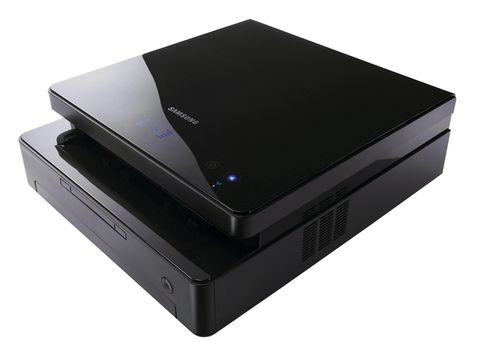TechRadar Verdict
It would appear that too much attention has been paid to this printer's looks than functions
Pros
- +
Sleek design
- +
Good set of features
Cons
- -
Sluggish print speeds
- -
Networking is too fiddly to set up
Why you can trust TechRadar
Samsung has worked hard on the styling of the ML-1630W to come up with a laser printer that is unlike any printer you have ever seen before.
In appearance it is a pair of shiny black slabs stacked one on the other and the result is very striking, although we think Samsung is pushing things when it claims the styling is based on the looks of a Steinway piano.
As part of the look and feel, the ML-1630W does away with the usual control buttons and relies on touch-sensitive controls that are part of the shiny surface of the printer.
To add to the quirky nature of the Samsung, there is an array of blue LEDs to alert you to the activities of the printer.
Slow printer
The slimline looks are helped by a paper tray that holds no more than 100 sheets of paper, while the clip-on clear plastic output tray only holds 30 sheets, which appears to be a triumph of form over function.
The top of the printer lifts up on a support to reveal the ML-D1630A toner cartridge, which has a 2000-page life and sells for £55 (inc. VAT) to give a rather steep 2.8p cost per page.
Internally the 150MHz Samsung processor and 8MB of memory hint at a relatively feeble engine and this is indeed a slow printer. The 47-second time to print 10 pages works out to a speed of 13ppm, which is surprisingly close to Samsung's claimed speed of 16ppm.
Networking setup
This is a very quiet printer with a noise level of 45dBA, but it also has a surprisingly long list of features. In addition to the USB 2.0 port, there is 10/100 Ethernet (cable supplied) and 802.11b/g wireless, which sounds ideal if you're printing from a laptop.
The problem is that setting up the Samsung is appallingly complex and requires you to manually enter an IP address for the printer, along with your MAC address and encryption details.
This renders the wireless effectively useless, unless you enjoy network engineering and we cannot count ourselves in that group.
Overall, the ML-1630W a great-looking printer, but Samsung's software makes it a little too fiddly to be truly practical.

The road to analytics excellence is paved with automation

This has to be the most absurd portable power station ever launched — Asus's Mjolnir throws the hammer at rivals with innovative design that's likely to divide opinions

Pixel's new satellite feature could show people where you are on Google Maps
